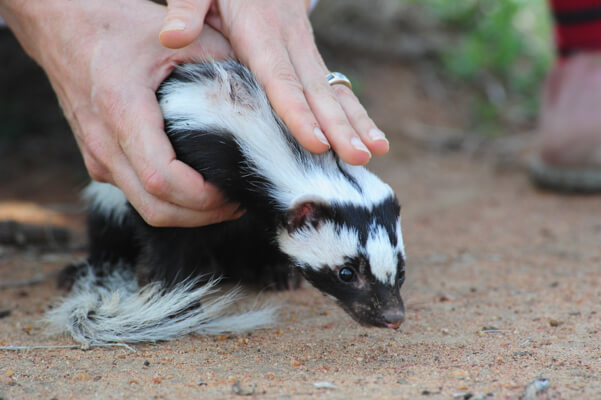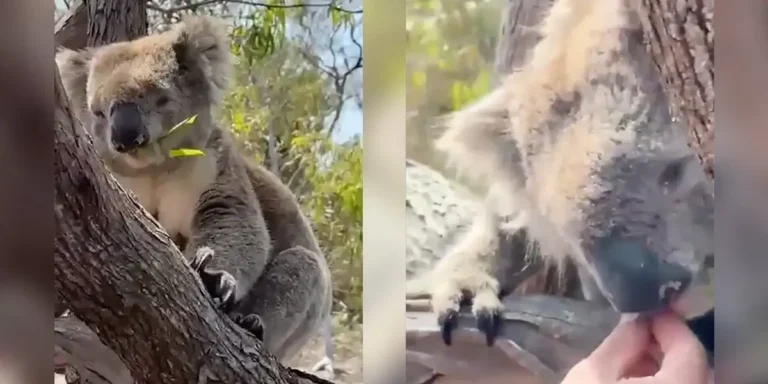Zorilla: Fascinating Facts and Habitat Insights
The zorilla (Ictonyx striatus), the striped or African polecat, is a fascinating and unique member of the mammalian order Carnivora. This elusive animal, often mistaken for a skunk due to its striking appearance and defensive behavior, has captivated the interest of naturalists and wildlife enthusiasts alike. In this guide, we’ll explore its scientific classification, physical characteristics, habitat, behavior, diet, reproduction, predators, conservation status, and some interesting facts and its relationship with humans.
Contents
Scientific Classification
- Kingdom: Animalia
- Phylum: Chordata
- Class: Mammalia
- Order: Carnivora
- Family: Mustelidae
- Genus: Ictonyx
- Species: Ictonyx status
Physical Characteristics

The zorilla is a small, skunk-like animal with a body length of around 30-40 cm and a bushy tail that adds 20-30 cm. It has distinct black and white stripes running down its back, making it look similar to a skunk. Its fur is coarse, and the striped pattern serves as a warning to predators. Weighing about 1-3 kg, this graceful creature is well-adapted to its environment, equipped with strong claws for digging and a sharp sense of smell.
Habitat
Zorillas are found primarily in sub-Saharan Africa, inhabiting various environments, including savannas, grasslands, and woodlands. They are highly adaptable and can survive in arid regions, though they avoid dense forests and wet areas. Their ability to thrive in different habitats demonstrates their adaptability.
Behavior and Adaptations
The zorilla is primarily nocturnal and solitary, spending the daylight hours hidden in caves or under rocks. Known for its defensive abilities, it releases a foul-smelling liquid from its anal glands when threatened, much like a skunk. This odor can incapacitate predators temporarily, giving the zorilla time to escape.
Zorillas are also territorial, marking their areas with scent. They are skilled diggers, using their claws to hunt for small prey underground or to escape potential threats. Despite their size, zorillas are fearless when defending themselves, capable of holding their ground against much larger predators.
Diet
As carnivores, zorillas feed on a diet rich in small animals, including rodents, insects, birds, and reptiles. They are opportunistic hunters, known to scavenge when necessary. Their strong sense of smell helps them locate prey even in difficult conditions, and they are known to raid chicken coops in human-populated areas.
Reproduction
Zorillas breed once a year, usually during the rainy season. After a gestation period of about 30-37 days, females give birth to a litter of 1-3 offspring. The young are born blind and helpless, relying on the mother for nourishment and protection. They stay with their mother for a few months before becoming independent.
Predators and Threats
While the zorilla has a range of natural predators, including large birds of prey, snakes, and carnivores, its potent scent defense deters many would-be attackers. However, human activities pose a significant threat to the zorilla, as habitat destruction and road accidents are common causes of mortality.
Conservation Status
Currently, the zorilla is classified as “Least Concern” on the IUCN Red List due to its wide distribution and relatively stable population. However, localized threats, such as habitat fragmentation and conflict with humans, could impact specific populations in the future.
Interesting Facts
- Stinky defense: The zorilla’s defensive odor is one of the most intense in the animal kingdom, with some reports claiming it can cause temporary blindness in predators.
- Loners by nature: Zorillas prefer solitude and are rarely seen in groups, except during mating season.
- Not a skunk: Though often confused with skunks due to similar defensive tactics, zorillas belong to the mustelid family, which includes weasels, otters, and ferrets.
Evolutionary History
Zorillas are part of the Mustelidae family, which includes diverse species such as badgers, weasels, and otters. This family has evolved over millions of years, with members adapted to various habitats and diets. The zorilla’s evolution has equipped it with specialized defenses and adaptations, allowing it to survive in harsh environments across Africa.
Relationship with Humans
Zorillas have a mixed relationship with humans. On the one hand, they are often viewed as pests, especially when they raid chicken coops or confront domestic animals. On the other hand, they help control rodent populations, which can benefit farmers. While not endangered, human activities, particularly habitat destruction, pose a growing threat to their population.
FAQs
Is a zorilla a real animal?
The zorilla is a real animal commonly known as the striped polecat. It is found throughout sub-Saharan Africa and is well-known for its defensive odor.
What is the difference between a skunk and a zorilla?
While zorillas and skunks share similar appearances and defense mechanisms, they belong to different families. Zorillas are part of the Mustelidae family, while skunks belong to the Mephitidae family.
Are zorilla animals extinct?
No, zorillas are not extinct. They are currently listed as “Least Concern” by the IUCN, though habitat destruction and other human impacts threaten some populations.
What is another name for a zorilla?
The zorilla is also known as the striped polecat due to its black and white fur.
Conclusion
The zorilla is a remarkable example of nature’s adaptability and survival mechanisms. With its bold striped pattern, potent odor defense, and fearless attitude, it has carved out a niche in the ecosystems of sub-Saharan Africa. While not currently endangered, ongoing conservation efforts are crucial to ensure that human activities don’t negatively impact this fascinating species in the future.
- Golden Retriever Pros and Cons: What Every Pet Parent Should Know - 15 September 2025
- Cane Corso Dog Breed: Health, Care, and Lifespan - 14 September 2025
- Catahoula Leopard Dogs: Description, Temperament, Lifespan, & Facts - 21 July 2025







